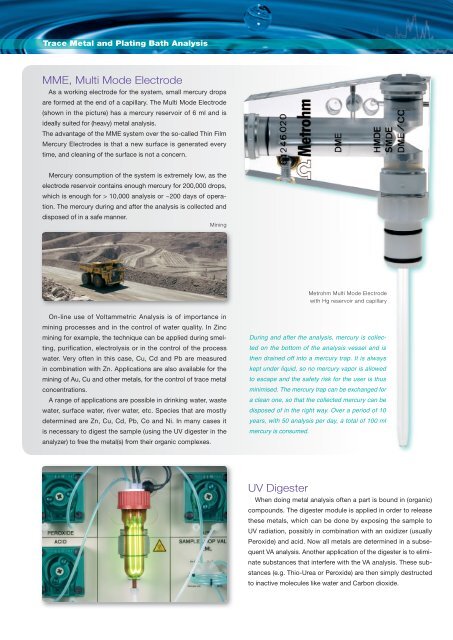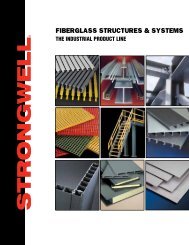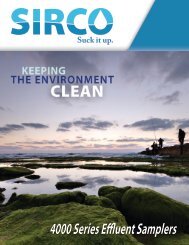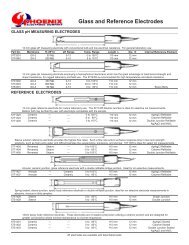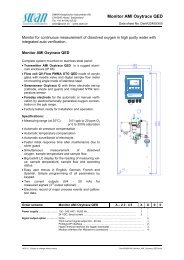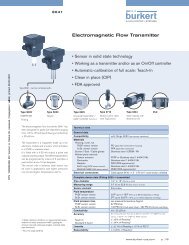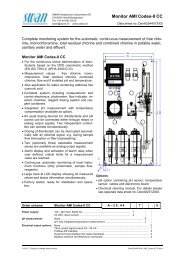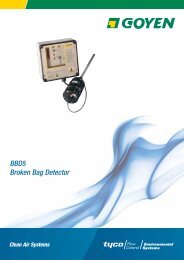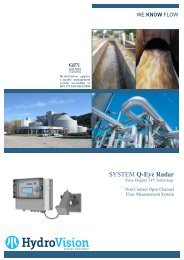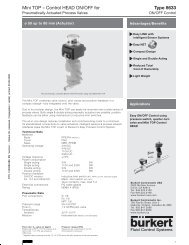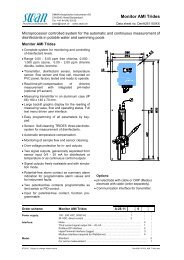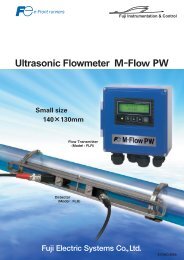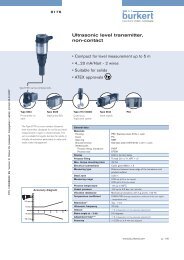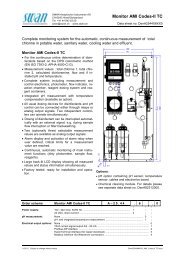ADI2045VA Process Analyzer - Applikon BV
ADI2045VA Process Analyzer - Applikon BV
ADI2045VA Process Analyzer - Applikon BV
Create successful ePaper yourself
Turn your PDF publications into a flip-book with our unique Google optimized e-Paper software.
Trace Metal and Plating Bath Analysis<br />
MME, Multi Mode Electrode<br />
As a working electrode for the system, small mercury drops<br />
are formed at the end of a capillary. The Multi Mode Electrode<br />
(shown in the picture) has a mercury reservoir of 6 ml and is<br />
ideally suited for (heavy) metal analysis.<br />
The advantage of the MME system over the so-called Thin Film<br />
Mercury Electrodes is that a new surface is generated every<br />
time, and cleaning of the surface is not a concern.<br />
Mercury consumption of the system is extremely low, as the<br />
electrode reservoir contains enough mercury for 200,000 drops,<br />
which is enough for > 10,000 analysis or ~200 days of operation.<br />
The mercury during and after the analysis is collected and<br />
disposed of in a safe manner.<br />
Mining<br />
Metrohm Multi Mode Electrode<br />
with Hg reservoir and capillary<br />
On-line use of Voltammetric Analysis is of importance in<br />
mining processes and in the control of water quality. In Zinc<br />
mining for example, the technique can be applied during smelting,<br />
purification, electrolysis or in the control of the process<br />
water. Very often in this case, Cu, Cd and Pb are measured<br />
in combination with Zn. Applications are also available for the<br />
mining of Au, Cu and other metals, for the control of trace metal<br />
concentrations.<br />
A range of applications are possible in drinking water, waste<br />
water, surface water, river water, etc. Species that are mostly<br />
determined are Zn, Cu, Cd, Pb, Co and Ni. In many cases it<br />
is necessary to digest the sample (using the UV digester in the<br />
analyzer) to free the metal(s) from their organic complexes.<br />
During and after the analysis, mercury is collected<br />
on the bottom of the analysis vessel and is<br />
then drained off into a mercury trap. It is always<br />
kept under liquid, so no mercury vapor is allowed<br />
to escape and the safety risk for the user is thus<br />
minimised. The mercury trap can be exchanged for<br />
a clean one, so that the collected mercury can be<br />
disposed of in the right way. Over a period of 10<br />
years, with 50 analysis per day, a total of 100 ml<br />
mercury is consumed.<br />
UV Digester<br />
When doing metal analysis often a part is bound in (organic)<br />
compounds. The digester module is applied in order to release<br />
these metals, which can be done by exposing the sample to<br />
UV radiation, possibly in combination with an oxidizer (usually<br />
Peroxide) and acid. Now all metals are determined in a subsequent<br />
VA analysis. Another application of the digester is to eliminate<br />
substances that interfere with the VA analysis. These substances<br />
(e.g. Thio-Urea or Peroxide) are then simply destructed<br />
to inactive molecules like water and Carbon dioxide.


